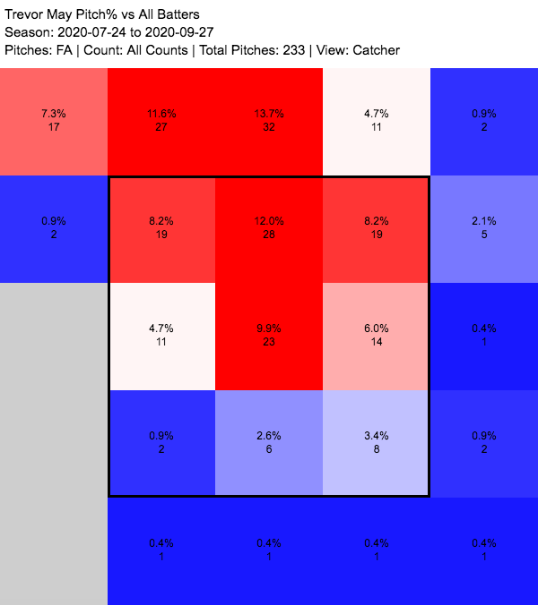Wednesday was the deadline for teams to offer contracts to their arbitration-eligible players, and the expectation going into the night was that plenty of players would be added to the free-agent pool. As Eric Longenhagen noted, non-tenders have been on the rise over the last few years, and 2019 gave us the busiest deadline in recent memory, as we saw players coming off injuries, quality second basemen, and sluggers with other deficiencies all get cut — 53 in total.
This year was even busier, as close to 60 players lost their roster spots. With the moves now official, here are a handful of takeaways from the deadline and what they mean for the coming winter. (For a full list of non-tenders, Roster Resource has you covered.)
Pre-Tenders Were a Big Deal for Small Deals
Sometimes the threat of a non-tender is enough to strike a favorable deal with players. There were a huge number of one-year deals agreed to, including some fairly recognizable names. Matt Olson, Eduardo Rodriguez, José Berríos, Byron Buxton, Hunter Dozier, Jorge Soler, Johan Camargo, Jesús Aguilar, Omar Narváez, Steven Matz, and Alex Dickerson all agreed to one-year deals, likely below what they would have received in arbitration.
The fear of becoming a free agent in a pandemic winter likely played a big part in that. While free agency is generally a good thing, more players in the pool means more minor league deals and fewer major league guarantees for players on the fringes of the roster. By signing now and receiving a guaranteed deal, players also head into spring training without the risk of being cut and making considerably less money.
The Biggest Names Stayed Put
Ahead of the deadline, both Eric and our readers made their predictions on which players might get the axe, with some relatively big names potentially on the chopping block. But among the stars who might have been non-tendered, not much happened. Gary Sánchez received a contract from the Yankees, as Kris Bryant did from the Cubs. Tommy Pham looks like he’ll return to San Diego for another season. These weren’t exactly surprises, but after a shortened season and with teams scaling back payroll, big changes were still a reasonable possibility — if not via a non-tender, then as a potential trade. Some of these players — Bryant in particular — will resurface in trade rumors down the road, but for now, they’re staying put.
Sluggers Get Non-Tendered
The biggest name jettisoned was Kyle Schwarber, whose tenure in Chicago comes to an end after six seasons. The former postseason and World Series hero was still productive just a year ago, but his 2020 was a mess, as he struck out too much, hit way too many groundballs, and put up a 90 wRC+, though he was closer to average against right-handers. Though he’ll be just 28 years old next season and looks to be a big bounce-back candidate if he can find a nice platoon, the Cubs decided his $8 million salary would be better spent elsewhere. Given that they also jettisoned Albert Almora Jr., their outfield should look a little different in 2021.
Schwarber and Almora aren’t alone among hitters looking for a new home. Eddie Rosario and Hunter Renfroe were put on waivers and went unclaimed. Maikel Franco was not offered a deal by Royals. Adam Duvall, Danny Santana, Nomar Mazara, José Martínez, and Travis Shaw will all hit free agency, too. One of the more interesting players to be let go is David Dahl, who struggled in Colorado and battled injuries but was once a top prospect.
There wasn’t a crowded crop of corner outfielder-types on the market, with Marcell Ozuna in the top tier and Joc Pederson occupying the step below. But the likes of Rosario, Renfroe, Duvall, Dahl and Mazara will join the Robbie Grossman/Adam Eaton/Yasiel Puig tier that suddenly has a lot more available players.
Add a Few More Available Relievers
The veteran relief group was already pretty deep, and it got deeper on Wednesday. Archie Bradley was good last year and in 2019, and he might be the second-best reliever now on the market. The rest of the relievers now available don’t have Bradley’s upside, but Hansel Robles, Keynan Middleton, Ryne Stanek, Matt Wisler, A.J. Cole, Alex Claudio, John Brebbia, Chasen Shreve, Jonathan Holder, and Justin Anderson are all capable arms for bullpens in need. In the semi-intriguing starter/maybe reliever category, Trevor Williams, Tyler Anderson, and Carlos Rodón weren’t tendered contracts, either.
This Was As Bad As it Was Expected to Be
While the non-tender deadline is generally more of a minor date in the offseason calendar, it was a much bigger deal this season. With a greater number of players expected to become available, teams have, for the most part, opted to wait on signing free agents to see who got let go. With the pool of available players now larger, we will see if teams choose to wait out the available options to get even more favorable terms in free agency. We also saw a large number of arbitration-eligible players agree to deals before the deadline to avoid the possibility of being non-tendered. The uncertainty surrounding how arbitration will play out after a shortened season also likely played a role in the increase of these deals.
The starting pitching market in free agency appears to be moving rather quickly, and the Mets’ signing of Trevor May could get the reliever market moving too. But the non-tender deadline was a snap back to the reality of the long, cold winter players face ahead.


